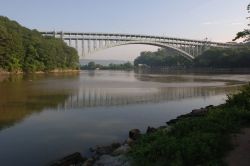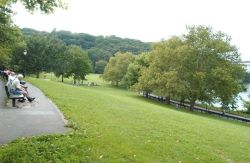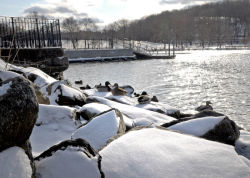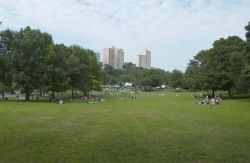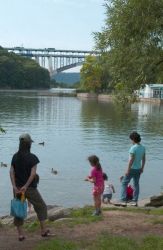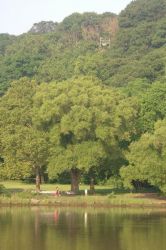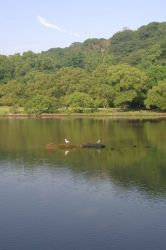Inwood Hill Park
Highlights
Emerson Playground
This playground is named for Emerson Street, a westward extension of 207th Street, which once curved into a semi-circle and connected to Isham Street. It was largely… Read More
Fort Cockhill
In the summer and fall of 1776, New York was the primary battlefield of the war for America's independence. At stake were the City's strategic harbor and inland… Read More
Glaciers in New York City - Inwood Hill Park
Inwood Hill Park now contains the last natural forest and salt marsh in Manhattan, but the land once lay beneath a huge sheet of moving ice. The most recent ice age began… Read More
Indian Road Playground
This playground takes its name from the road that bounds it to the north. Formerly known as Isham Avenue to honor local landowner William B. Isham, Indian Road earned its… Read More
Inwood Hill Park - Fordham Gneiss in New York City
Fordham gneiss, one of the oldest rock formations in the world, can be seen from Inwood Hill Park by looking across Spuyten Duyvil Creek. Named for the Bronx neighborhood… Read More
Inwood Hill Park - Salt Marshes in New York City Parks
Salt marshes play a critical role in the support of human life, acting as natural filtration systems by trapping pollutants that would otherwise contaminate our bays and… Read More
Ken De Groat Ballfield
This baseball diamond bears the name of dedicated Inwood Little League coach, Ken De Groat (1942-1991). De Groat became involved with the little league when his daughter… Read More
Payson Playground
George Shipman Payson (1845-1923), the son of a minister, was born in Harpersfield, New York. Two years after graduating from Yale University in 1862, Payson began… Read More
Spuyten Duyvil Creek
There has been much speculation concerning the origin of the name “Spuyten Duyvil.” Dutch in origin, Spuyten Duyvil can be translated in two ways, depending… Read More
Check out your park's Vital Signs
Clean & Safe
Green & Resilient
Empowered & Engaged Users
Share your feedback or learn more about how this park is part of a
Vital Park System

Know Before You Go


